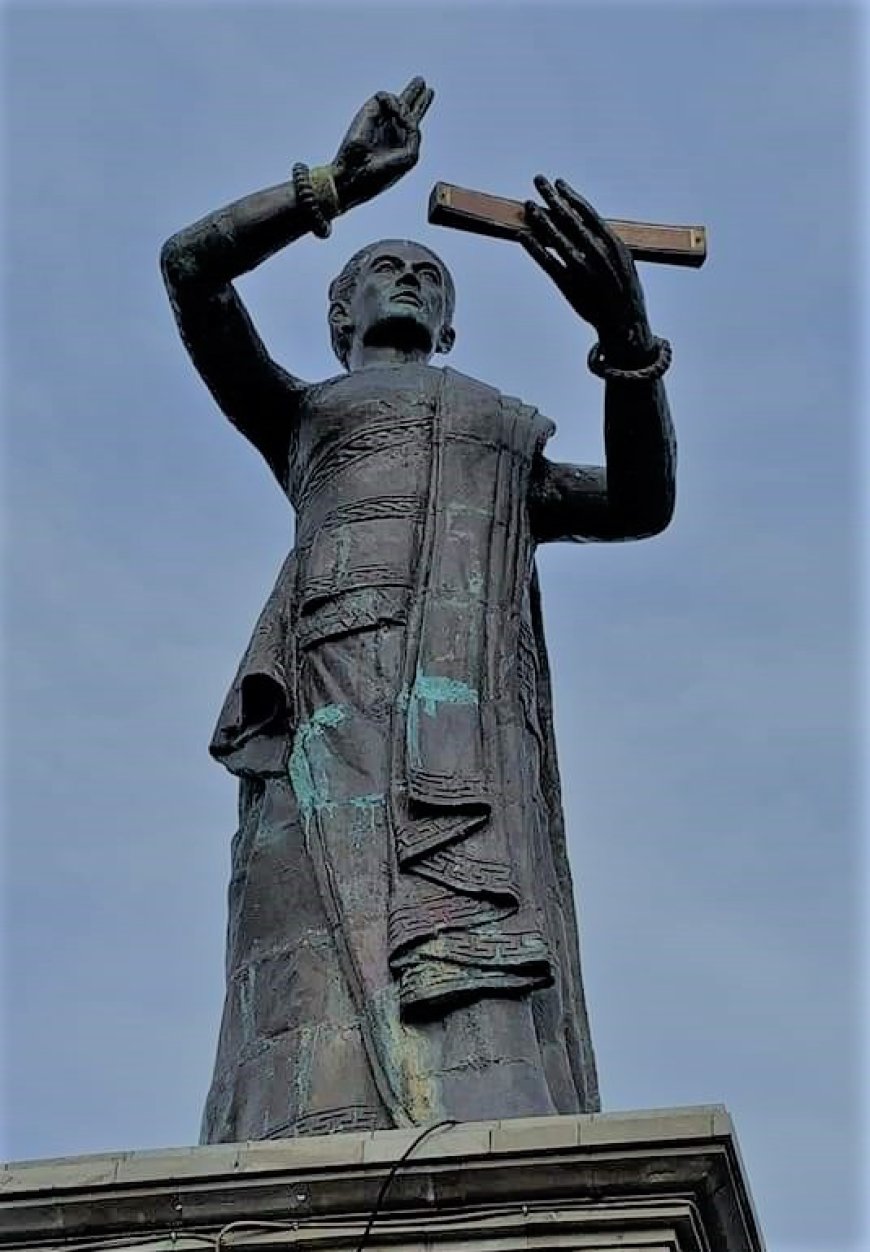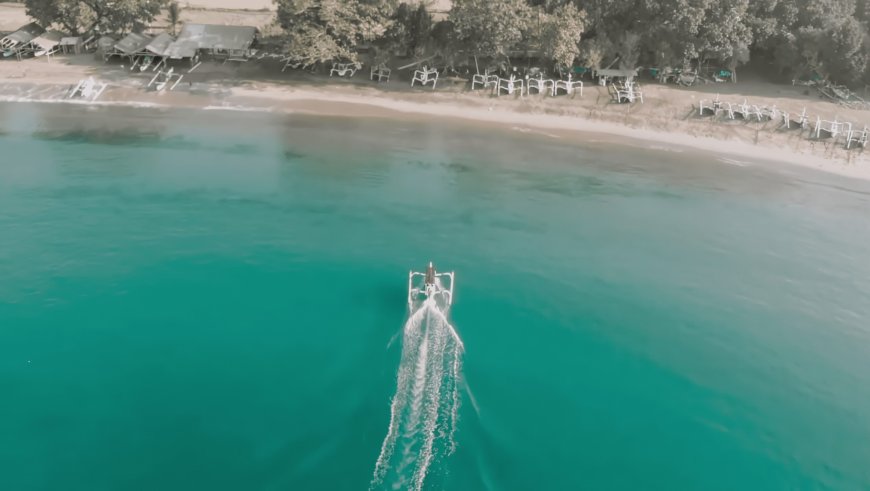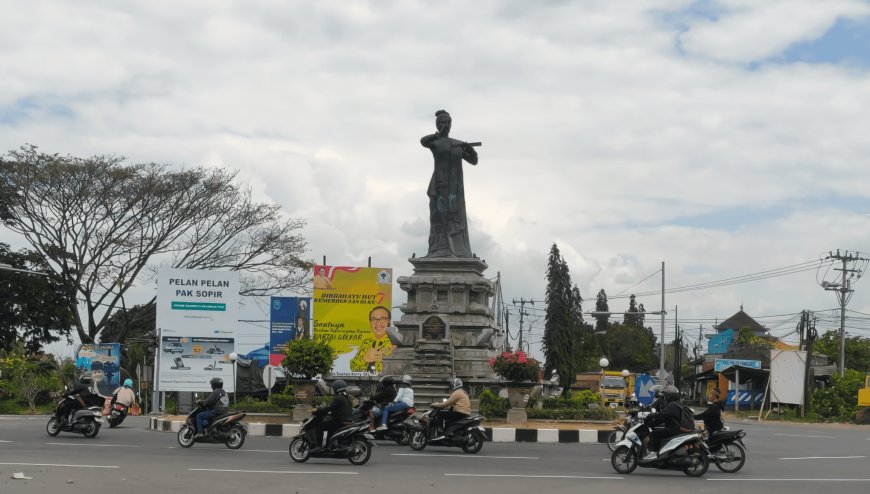The Iron Lady of Bali: Ida I Dewa Agung Istri Kanya, The Leader of Puputan Kusamba War
Not as well known as Cut Nyak Dien or Dewi Sartika, this Balinese heroine deserves to be recognized. Ida I Dewa Agung Istri Kanya played an important role in the historical record as the King of Klungkung and leader of the Kusamba War. The nickname "The Iron Lady of Bali" was even given to her by the Dutch after she defeated Dutch troops and killed Major General Andreas Victor Michiels, a Dutch military officer who was successful in two major wars, the Diponegoro War and the Padri War.

When you hear the name of Indonesia, what is the first thing that comes to your mind? A land of a thousand islands? a unique land rich in customs and traditions? or a nation that fiercely fights for its homeland?
In the past, heroes fought to defend their homeland and eventually achieved the independence that we can enjoy today. Over time, society has come to realize that not only men can contribute as heroes in Indonesia's struggle, but women also have an important role to play. Despite this, their stories are often not given the attention they deserve. As quoted by author Peter Burke, "Women are almost 'invisible' to historians, in the sense that the importance of their daily work, their political influence (at all levels of politics), is generally overlooked while issues of social mobility are generally discussed from the male angle." Until 2020, there were 191 people recognized as Indonesian national heroes. Unfortunately, only about 9 percent or 17 of them are women.
Women's names are often forgotten in history due to the patrilinial culture that runs deep in Bali. One of the less talked about stories of heroines' struggles is that of Ida I Dewa Agung Istri Kanya, the King of Klungkung and leader of the Kusamba War. Perhaps, for the people of Klungkung this name is familiar, but there are still few historical records documenting her struggle. She is known by the nickname "The Iron Lady of Bali". This nickname was given to her by the Dutch and she didn't just get it. She managed to repulse Dutch troops and killed Major General A. V. Michiels, a Dutch military officer who managed to extinguish two major wars, the Diponegoro and Padri wars.

Ida I Dewa Agung Istri Kanya Holds a Lontar (Source: Private Collection)
The island of Bali has several kingdoms in it, one of the kingdoms in the southeast of Bali is the Klungkung Kingdom. As a direct descendant of the king, Dewa Agung Istri Kanya was groomed to become the next king of Klungkung to replace her father. Dewa Agung Istri Kanya is the daughter of Ida I Dewa Agung Putra, also known as Ida I Dewa Agung Putra Kusamba (because of his court in Kusamba) and I Gusti Ayu Karang (I Gusti Ayu Pelung) from Puri Karangasem. As a child, Ida I Dewa Agung Istri Kanya was named Ida I Dewa Istri Muter. Ida I Dewa Agung Istri Kanya was also named Ida I Dewa Agung Istri Balemas because she lived in Balemas. Since being appointed as king, the name Ida I Dewa Agung Istri Kanya is officially used as a regal name. As she grew up, she received education in national defense, ethics and also government procedures.
Meanwhile in the 18th century, the Tawan Karang Law was being implemented in Bali. Tawan Karang Law regulates the privileges possessed by the kings of Bali. Tawan Karang Law has been part of the maritime tradition of Bali and Lombok for centuries. It entitles every Balinese kingdom and coastal community to own a ship and its contents that has washed ashore in their territory. Meanwhile, the passengers could be enslaved or taken prisoner. However, the Dutch considered this a threat to their interests. Therefore, a treaty was made to abolish the Law of Captivity.

Illustration of a Ship (Source: Private Collection)
In reality, this agreement was not carried out seriously. This opened the opportunity for the Dutch to launch their attack on Bali. The Dutch started by attacking the Buleleng Kingdom in 1846. The first and second attacks did not produce satisfactory results. So that in 1848 a third attack (Jagaraga War) led by Major General Andreas Victor Michiels erupted. Hearing this, Ida I Dewa Agung Istri Kanya as the 7th Klungkung king decided to help the Buleleng Kingdom by sending the Klungkung Kingdom army. However, because of the attitude of the Klungkung Kingdom, the Dutch turned to attack the Klungkung area. The battle was inevitable. The Dutch managed to repulse the Klungkung troops and seize the Kusanegara area or what is currently called Kusamba.
The Dutch decided to use Puri Kusamba as a resting place. The fall of Kusamba infuriated Dewa Agung Istri Kanya. In one night a strategy was formulated by her to reclaim the Kusamba area. The attack was launched on May 24, 1849. The sudden arrival of the Klungkung troops ambushed the Dutch army. Because the Dutch did not control the environment or area of Puri Kusamba, the situation was in favor of the Klungkung troops. In this chaotic situation, General Michiels stood in front of the castle while giving orders to his troops to shoot light bullets into the air. The situation became brightly lit. In fact, this situation was utilized by the Klungkung pemating laskar to approach General Michiels. At that moment, Dewa Agung Istri Kanya with a kris approached General Michiels. She also ordered to direct an heirloom cannon belonging to Klungkung with the name "I Seliksik" towards General Michiels. It is said that this heirloom cannon can find its own target. When fired, the cannon directly hit Michiels' right leg. The general was knocked down. This condition forced the Dutch army to retreat to Padangbai. General Michiels himself, who was about to have his leg amputated, eventually died.
Thanks to the heroic actions and war tactics of Dewa Agung Istri Kanya, the Kusamba region was recaptured. To commemorate her struggle, the people of Klungkung erected a statue at the intersection of the Bypass Ida Bagus Mantra-Kusamba, Dawan Klungkung Road. Dewa Agung Istri Kanya is known to have been single all his life. Because of this choice, she was named Istri Kanya (kanya means single or unmarried).

Statue of Ida I Dewa Agung Istri Kanya (Source: Private Collection)
She was not only known as a strict and brave king, but also had a significant influence in the field of literary arts. Dewa Agung Istri Kanya was famous as one of the queens who loved literature. During her time, the art of makekawin or mebebasan flourished. Dewa Agung Istri Kanya was not only a connoisseur of literary works, she was also a great author (pengawi) in her day. Therefore, Dewa Agung Istri Kanya was often dubbed as the king of kawi (rakawi). She created many literary works that depict important events, such as the death of her father and the great ceremonies that accompany the spirits of ancestors to the sacred realm. Some of the famous literary works created by her include Pralambang Bhasa Wewatekan and Kidung Padem Warak. In addition, she also produced several tembang wirama which include works such as Wirat Jagatnatha, Sragdhara, Sarddhula, Bhasanta, Asualalita, Merddhu Komala, Pratitala, Sronca, Wairat, Cikarini, Reng Lalita, and Tebusol. These literary works undoubtedly have a great impact and benefit to the current and future generations.
Being a woman is a precious gift. Factually, women have the potential to achieve anything and can work in various professions. Women also have the ability to play an active role in the public sphere. The involvement of Ida I Dewa Agung Istri Kanya in the Kusamba War is clear evidence, showing that Balinese history also includes the role of women in armed conflict. Unfortunately, knowledge about Ida I Dewa Agung Istri Kanya and her achievements is often forgotten, especially by the younger generation. Nonetheless, Ida I Dewa Agung Istri Kanya's contribution to literature and writing has had a significant impact on the history and civilization of Bali in later times. Currently, the Klungkung Regency Government is trying to propose the name of Ida I Dewa Agung Istri Kanya as one of the national heroes. However, until now, the district government is still facing difficulties in gathering the necessary authentic evidence, such as photos, drawings, or original illustrations that can support the proposal. In addition, they are also working on collecting other supporting evidence, such as lontar and other authentic evidence.






























































